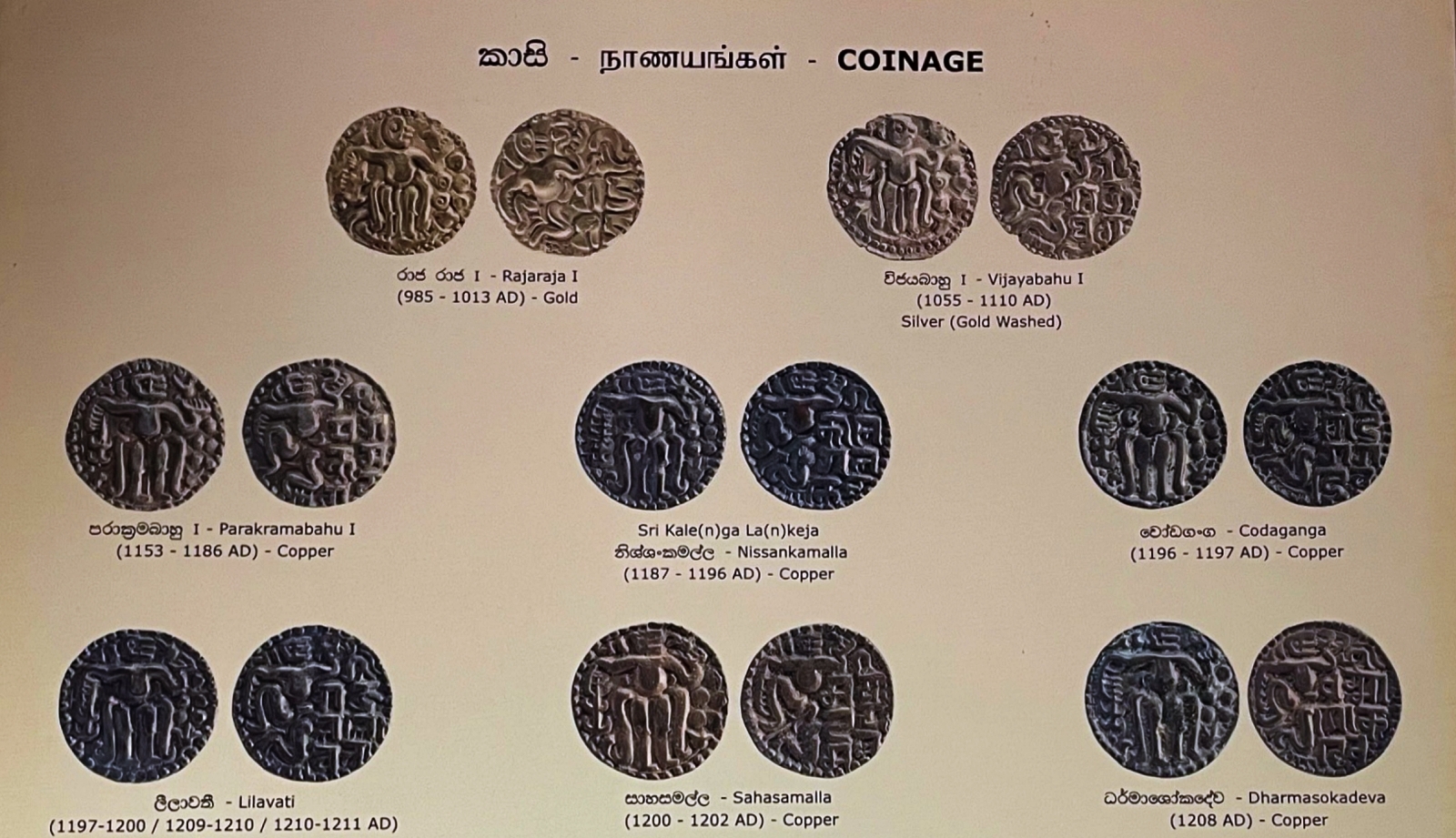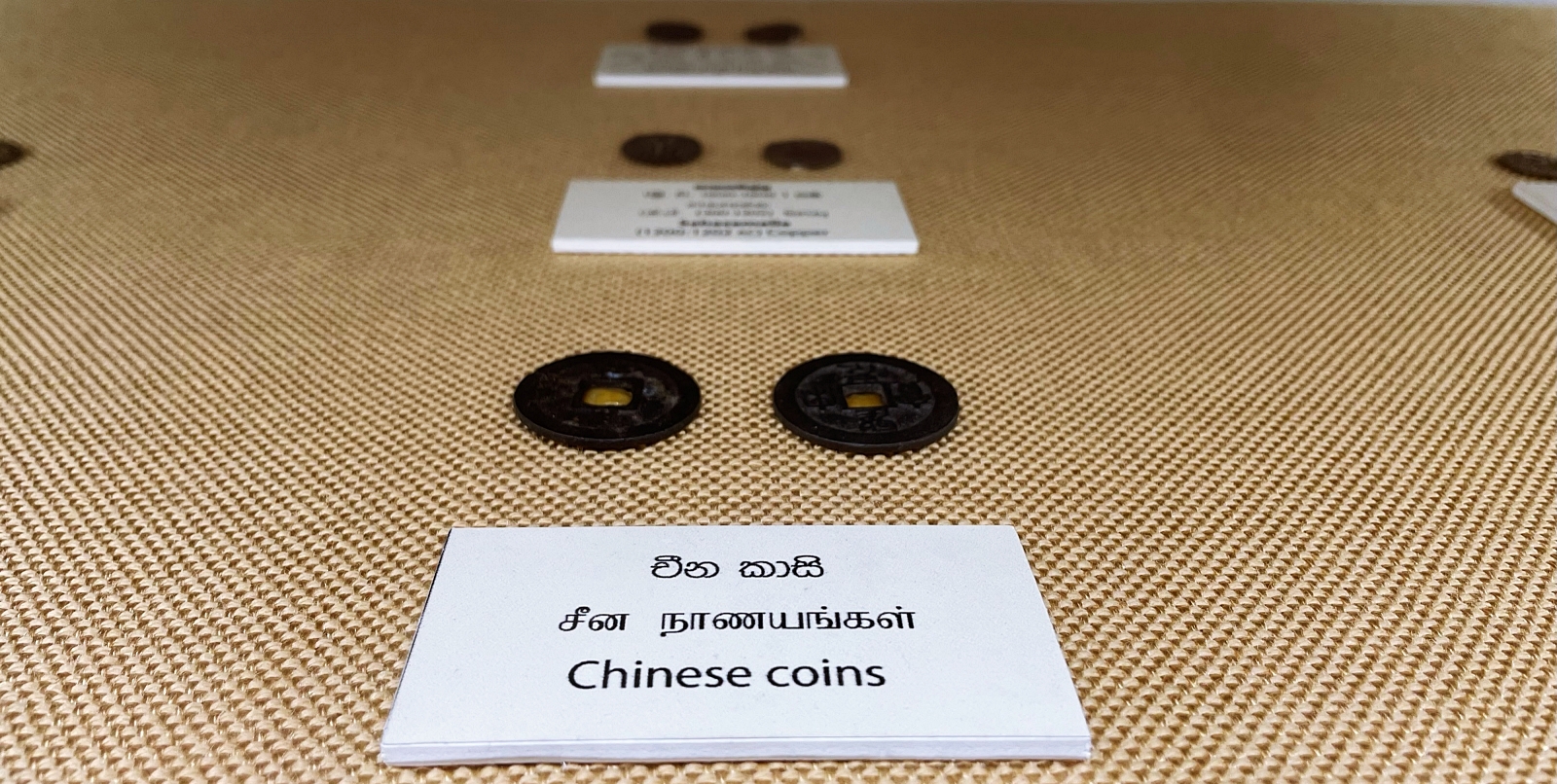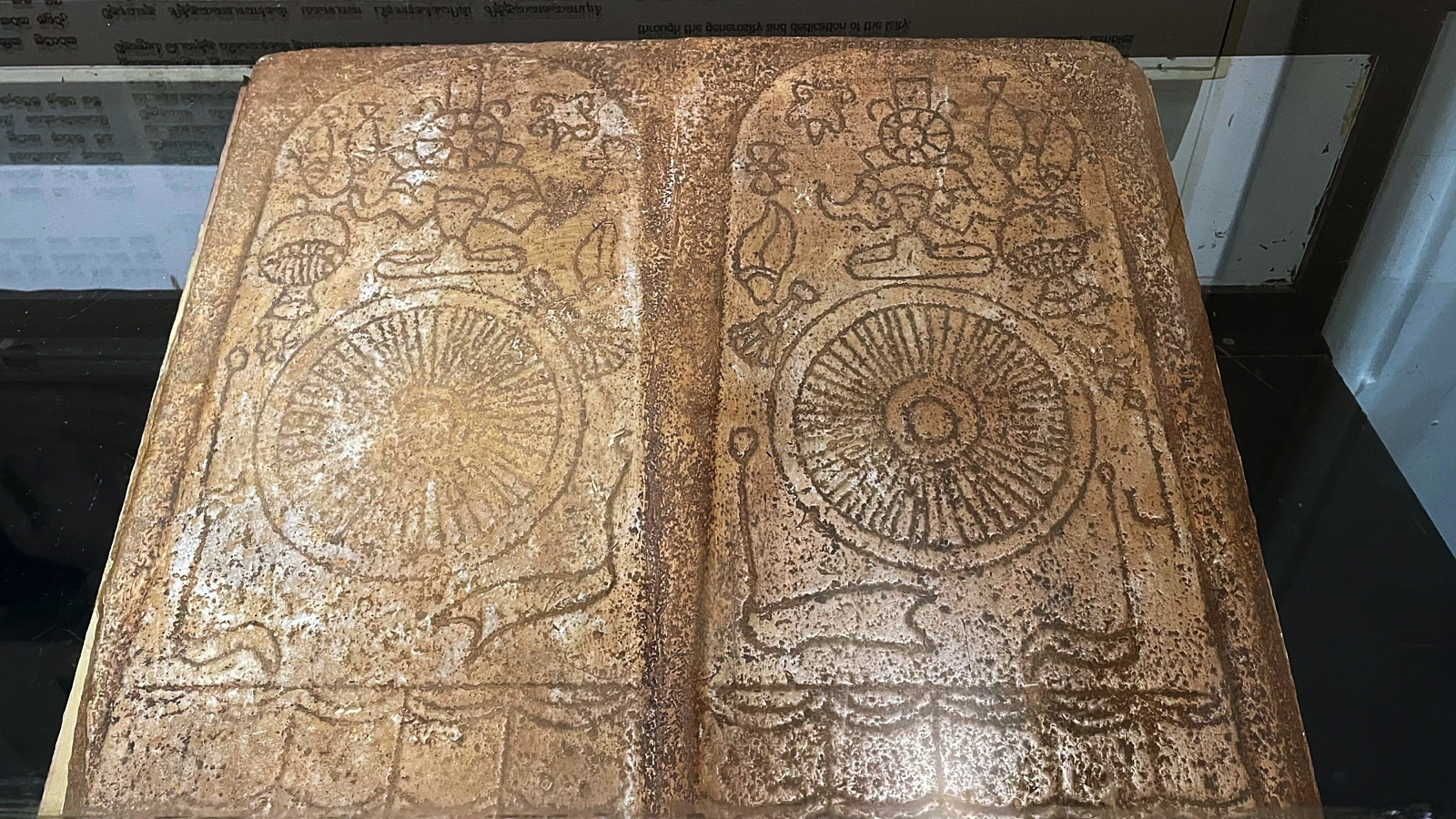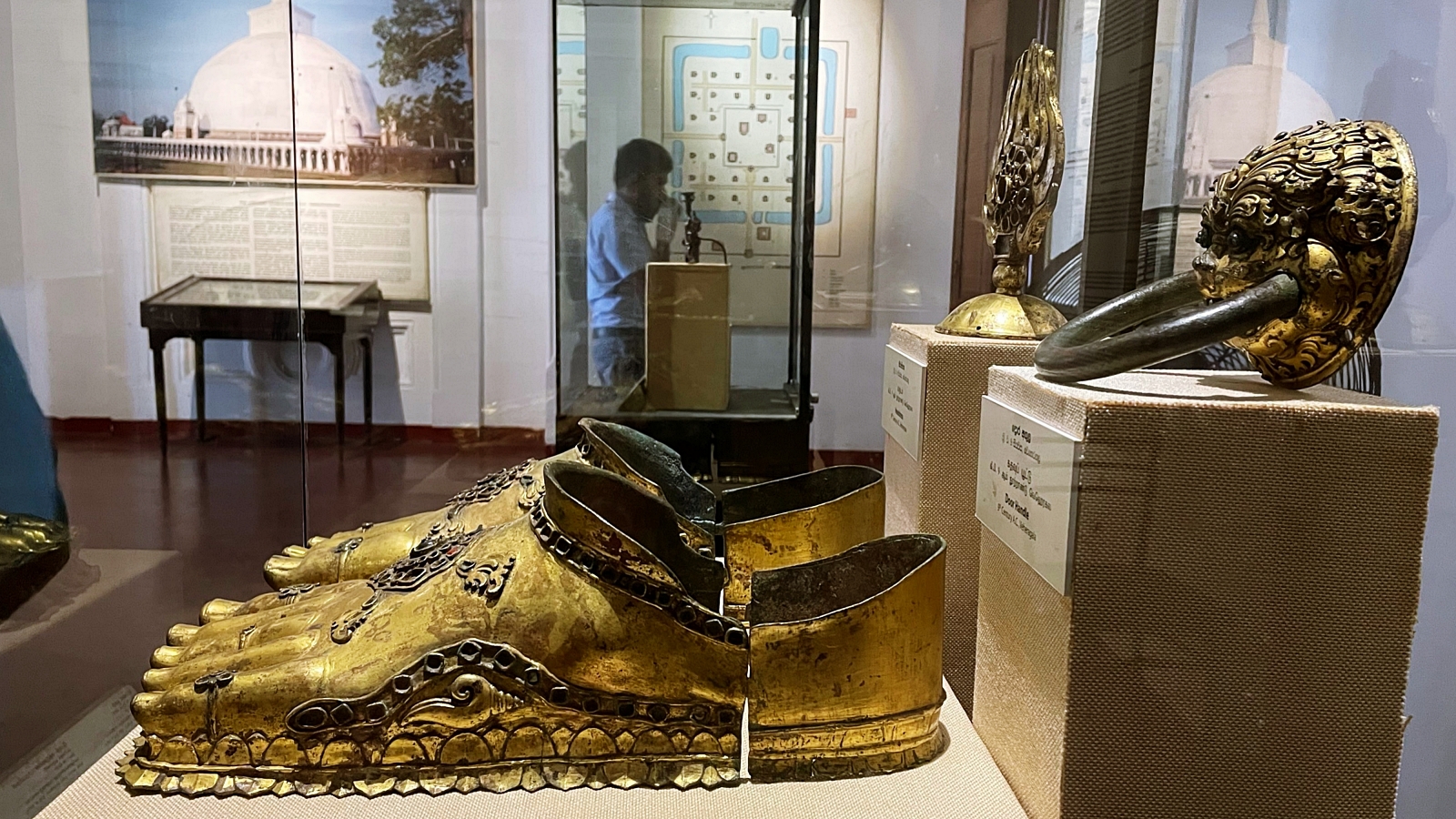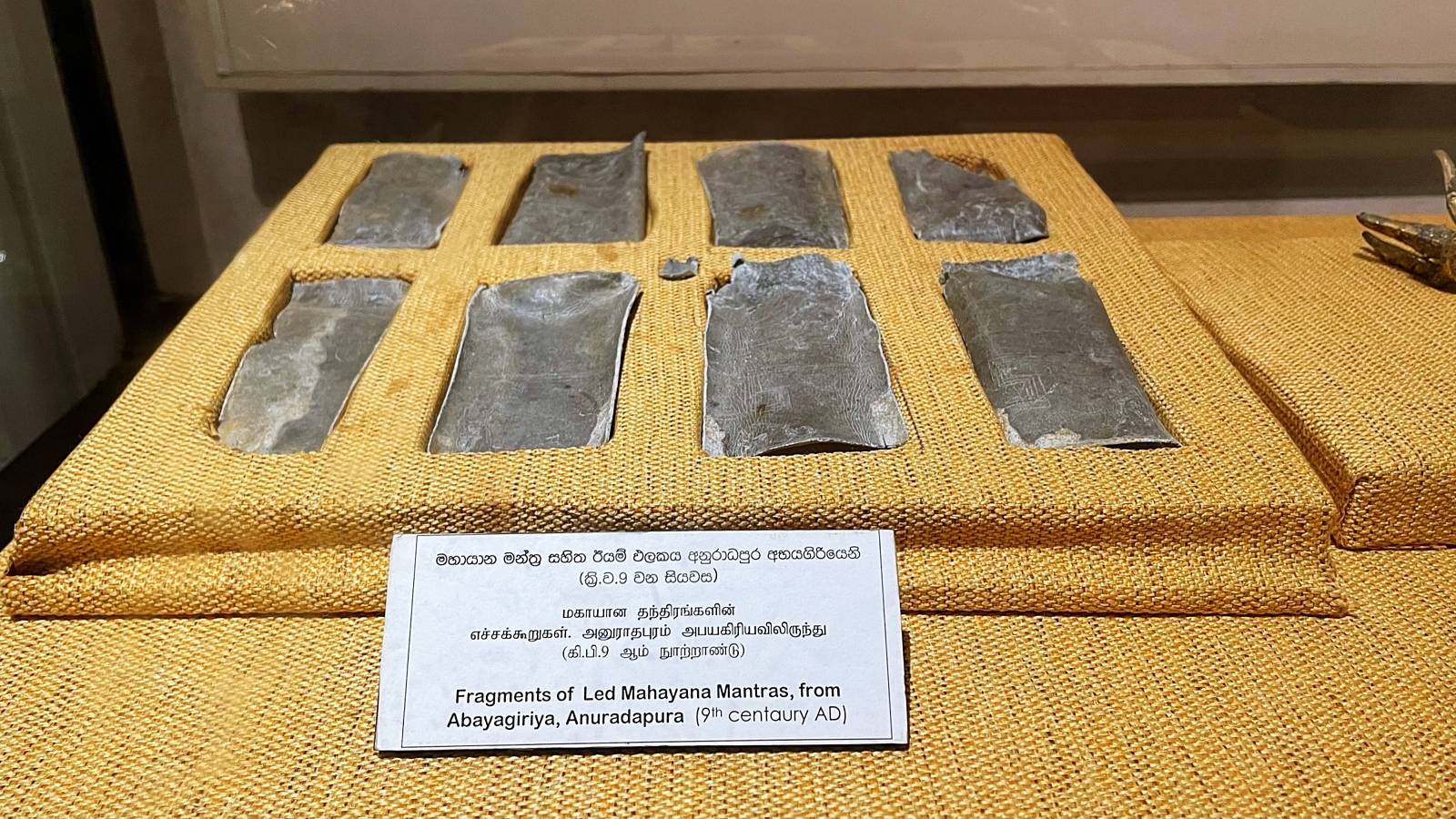Colombo National Museum: Learn about Sri Lanka
The Colombo National Museum legend enlightened me and will certainly continue to guide future generations about Sri Lanka’s illustrious past.
Due to its colonial heritage, Sri Lanka is home to various cultures and ethnic groups. Thus, Colombo, the country’s capital, has a large population of structures and architecture inspired by Europe. One such location is the National Museum of Colombo in Sri Lanka, which is equally spectacular in terms of design and purpose. A national museum serves as both a repository for a country’s historical and cultural heritage and a symbol of national pride. It enlightens the populace about historical lineage while reawakening nationalistic sentiments. However, most museums’ backstories will tell you what is needed to get them up and running.
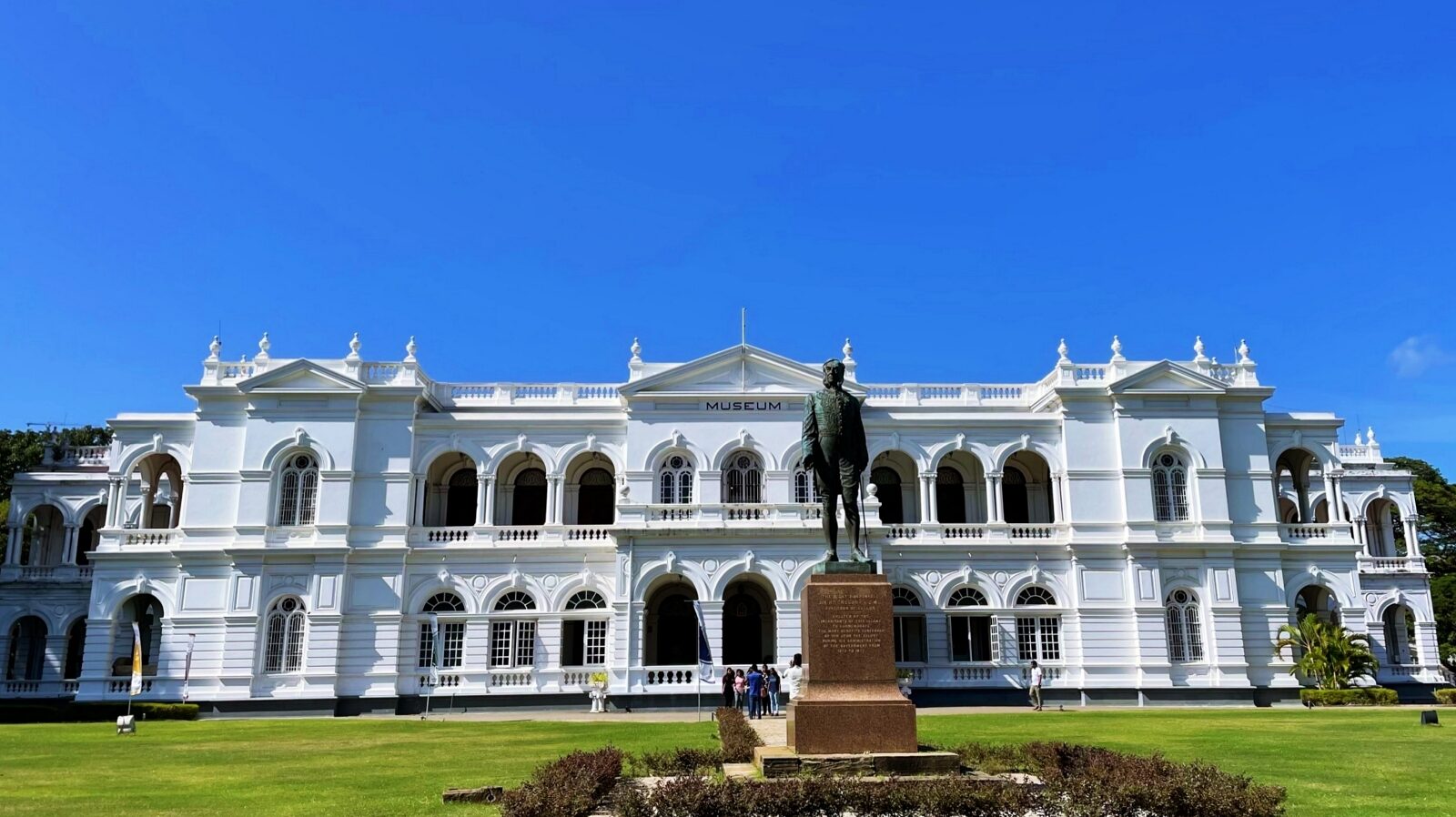
One such effort led to the foundation of the national museum in Colombo when on March 4, 1872, Sir William Henry Gregory of Britain, a keen watcher of museums, assumed the position of Governor of Ceylon. He was astounded to discover the cultural legacy, that was then hiding among the ruins when he first came to Ceylon. To preserve the rapidly fading history of Ceylon, he proposed to the British Government that a museum be built. At first, the Government rejected the idea due to the tremendous cost involved, but the governor persisted in using his connections to get support for the museums’ construction.
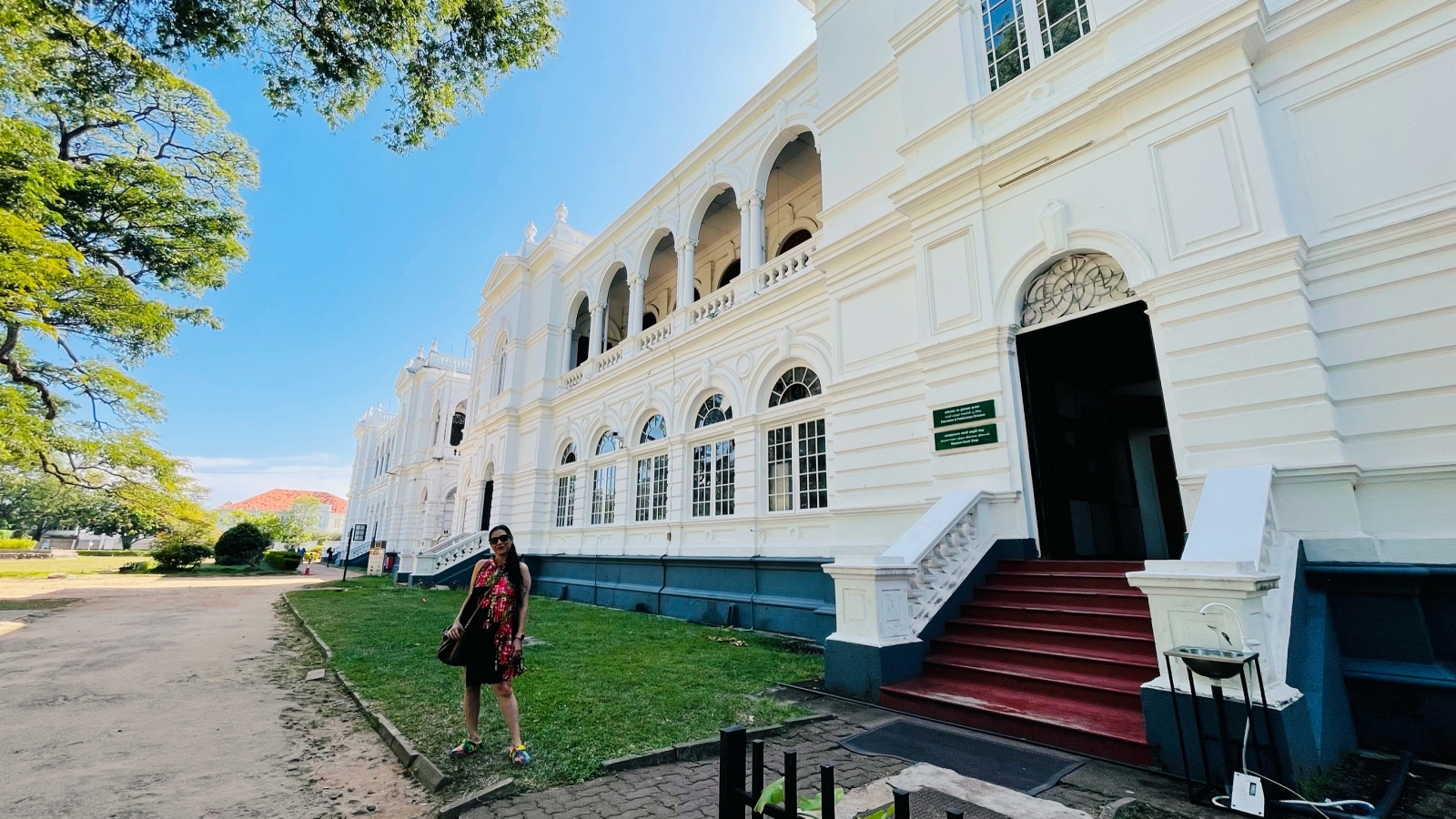
The British Government finally accepted his plan for building Ceylon’s first National Museum in 1874. Consequently, the government architect based the museum’s fundamental structure on Italian architecture, and Wapchi Marikkar, who also built the Colombo Post Office, the Old Town Hall in Pettah, and the Galle Face Hotel, was given the contract to build it. Read on to learn all there is to know about the Colombo National Museum, information that will be useful to you when you visit Sri Lanka.
Table of Contents
Artefacts on Display
The Colombo Museum was completed in two years as a two-storey structure with elaborate towers, arches, and open porches. On January 1, 1877, it was unveiled to the public along with 384 more specimens and 808 artefacts. Inscriptions, diverse stone sculptures, artefacts like jewellery and coins, and models of natural sciences were among the things on display. Over time, the museum has added several new East and West-sourced sections. In front of the museum is a sizeable, well-kept lawn covered in banyan trees. In the lobby of the museum, there is a statue of Buddha sitting in meditation. The Buddha statue is among the best maintained in the nation and dates back to the fourth century.
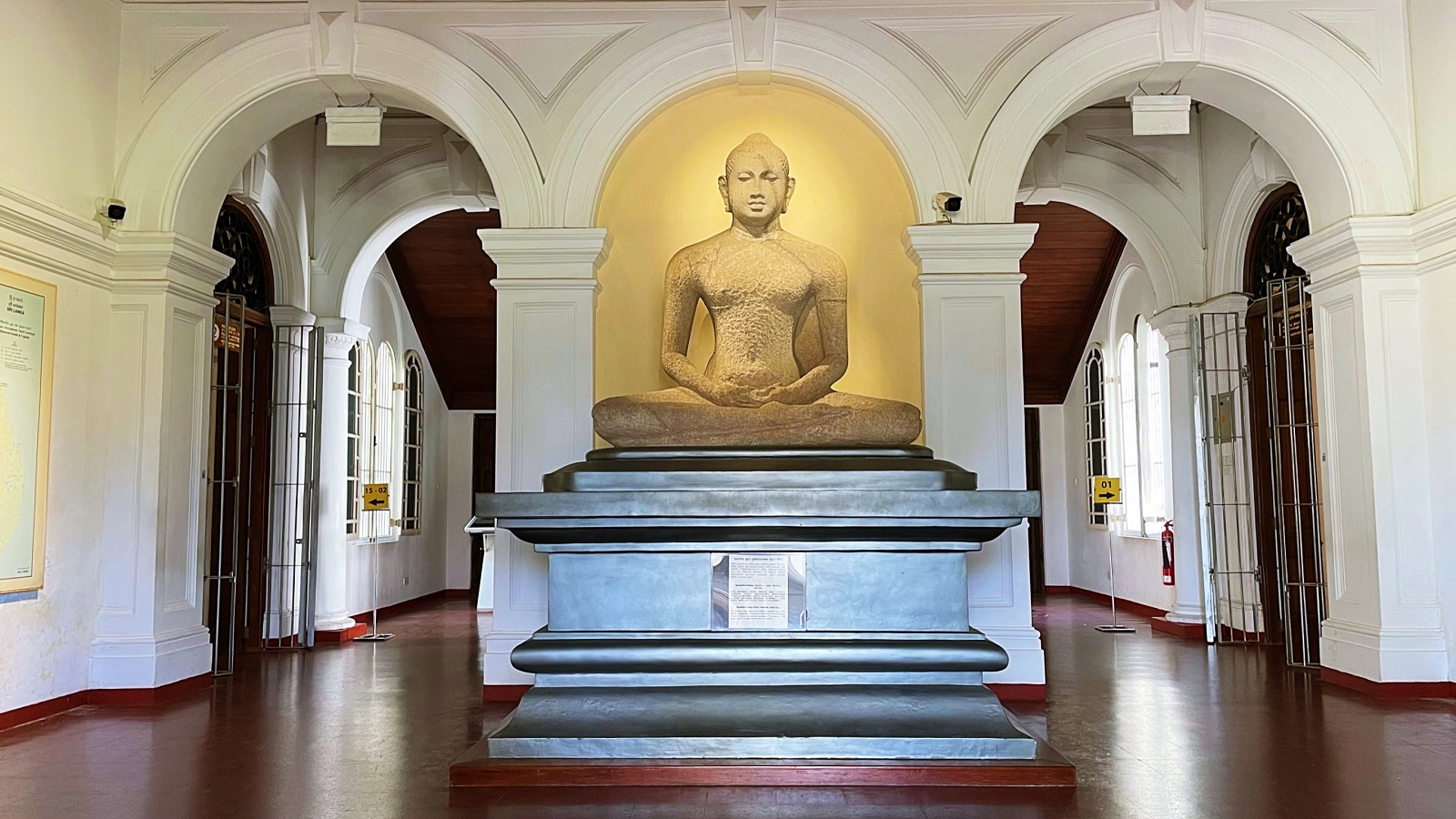
The statue, which experts consider to be a masterpiece, enhances the ambience of the museum. The upper floor galleries are organised thematically, while those on the ground floor are in chronological order. The pre-and-photo historic period, the Anuradhapura period, the Polonnaruva period, the transitional period, the Kandy period, and the stone antiquities gallery are all on the ground level. Paintings, textiles, pottery, ceramics, coins and currencies, standards and banners, art and craft, arms and armaments, traditional agriculture (planned), the D.S. Senanayake Memorial Gallery, and customary ceremonies are all located on the second floor.
Dr Pearson served as the Colombo Museum’s final British National Director. The Colombo Museum was given national museum status by the Museums Act No. 31 of 1942 at the request of Dr P.E.P. Deraniyagala, and branches were established in Jaffna, Kandy, and Ratnapura. At this time, the British government consented to hand over the throne and jewels of King Sri Wickrema Rajasinghe, which were kept in the British Museum, to the government of Ceylon. The last King of Kandy’s crown jewel and throne, which were given back to the Sri Lankan people by the British, are the museum’s principal draws.
When these royal antiques were initially presented in 1934, a crowd of about 750,000 people came to see them because of their beauty, which is so breathtaking. The museum also houses a sizable collection of masks and puppets. Since then, the Colombo National Museum has expanded under the direction of nine different directors. Additionally, it includes 16 exhibition booths where artefacts from earlier times are kept. We enjoyed perusing the extensive collection, which included the tallest metal Buddha statue discovered in Sri Lanka, which is a representation of Abhaya Mudra with the right hand and Vitharaka Mudra with the left. It had been broken into multiple pieces when it was found.
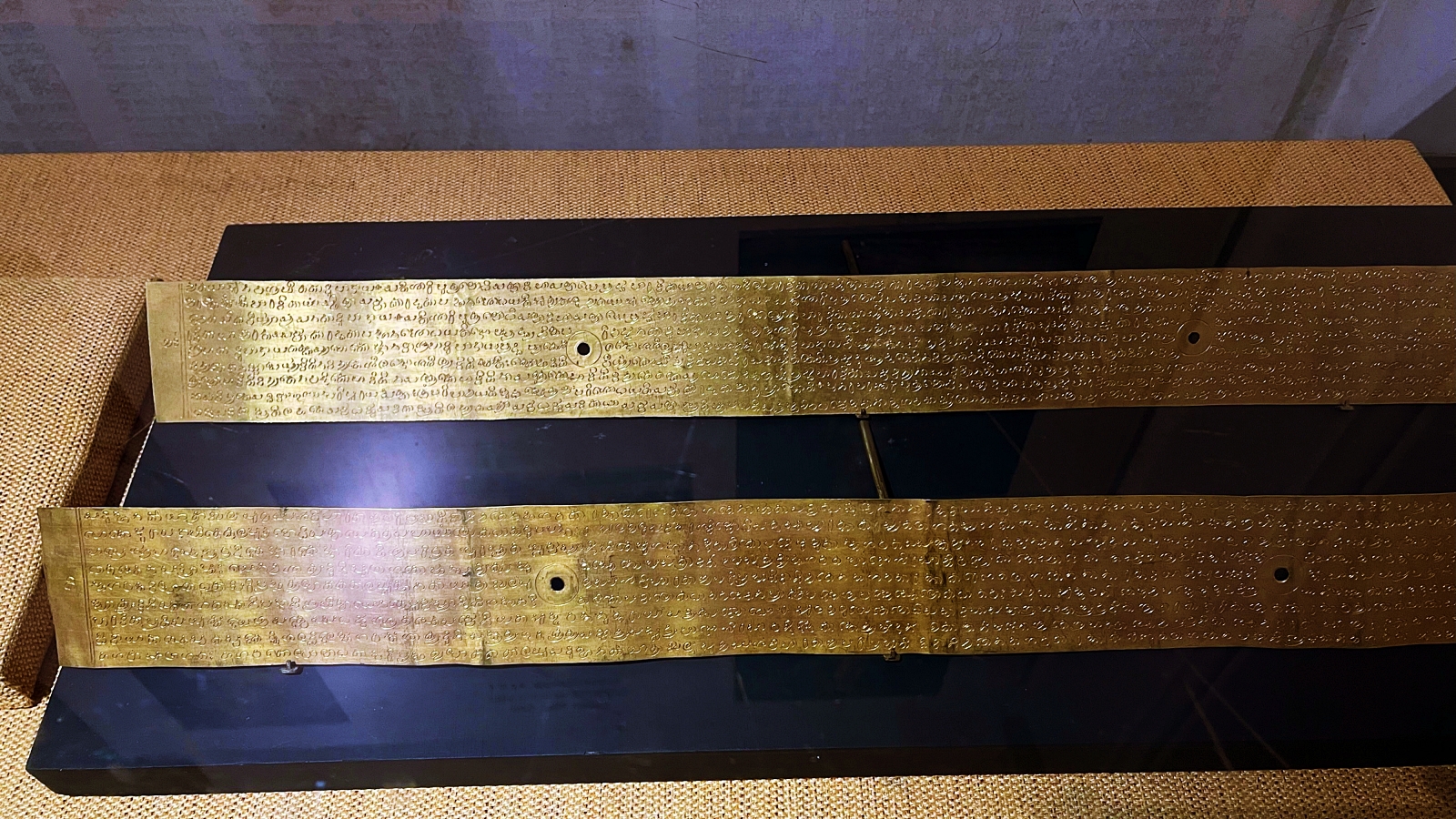
The Buddha figure from Toluvila, Anuradhapura, dates around 800 AD. It presents the Blessed One as the personification of unfathomable knowledge and unbounded compassion. The image’s calmness suggests the Buddha’s ideal state of mind. A bronze solid cast Vajrapani Bodhisattva from the ninth century AD. The oldest gold plate inscription found in Sri Lanka in the 1st century, a Golden manuscript, Sinhalese ceremonial swords, and the remnants of the traditional paddy storage structure. The collection will amaze you.
Some of the fascinating artefacts that you can’t miss on your Colombo National Museum tour are:
Panakaduva Grant
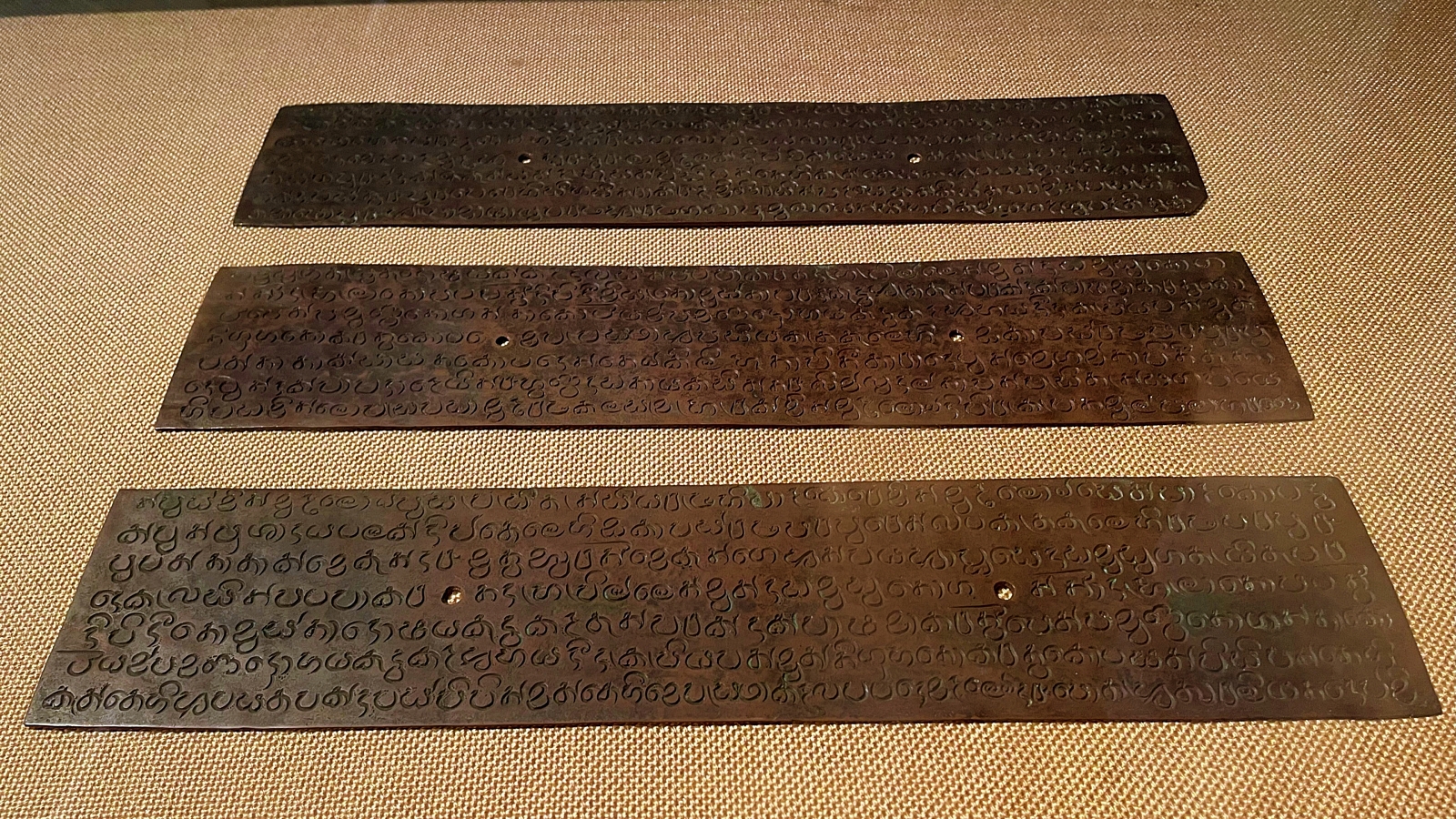
The inscription consists of three copper plates and is written on both sides of the plates. It records a special grant made to an officer named Sitnaru Him Budalnavan by king Vijayabahu I for the protection afforded to him when he was in hiding due to the Cola incursion. The copper plate constitutes the earliest copper plate grant made by a Sri Lankan King.
Siva Nataraja
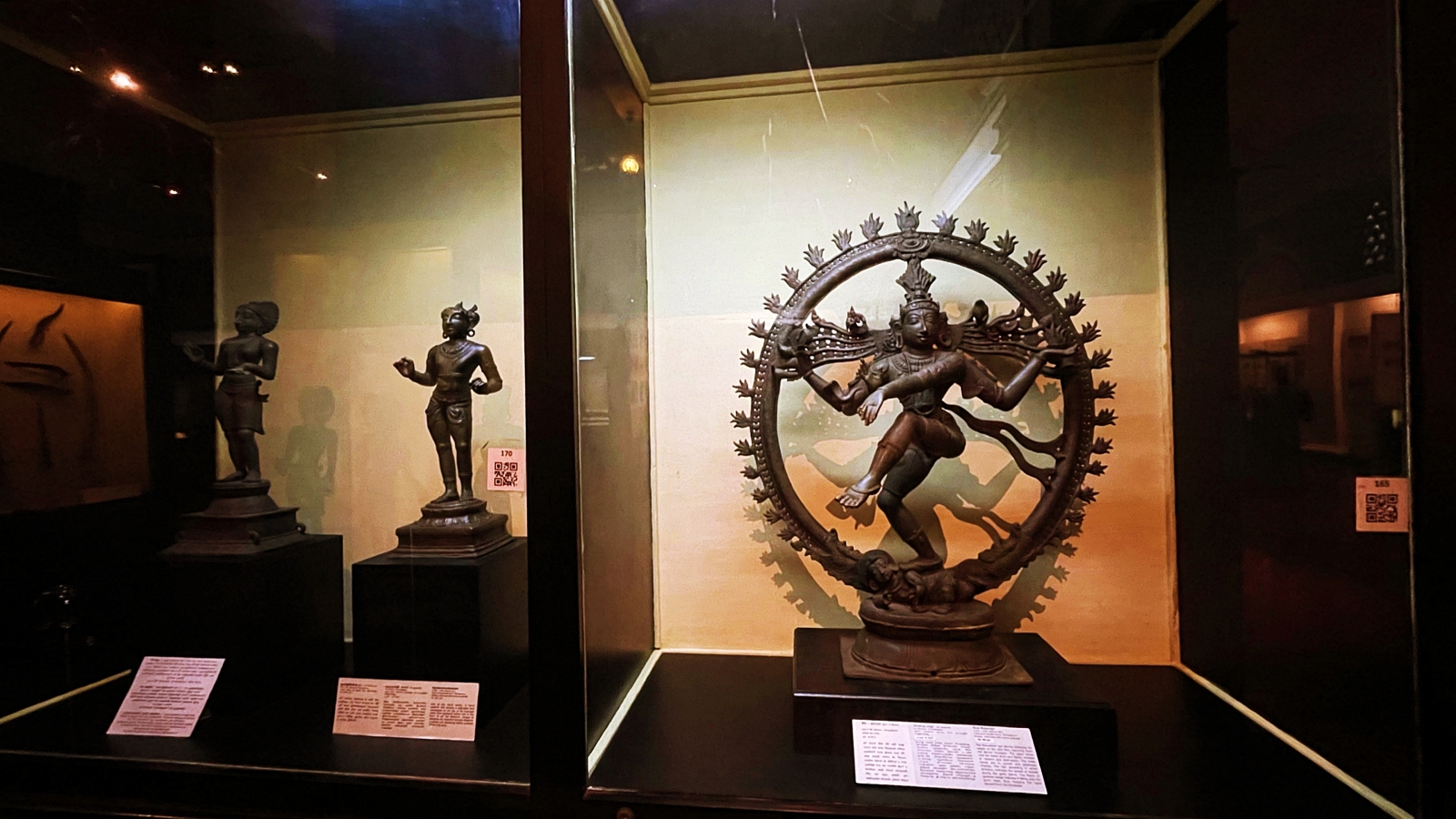
The four-armed god dances balancing his weight on the right foot, trampling down the demon Muyalaka. The upper hands hold the kettle drum and flame, symbols of creation and destruction. The lower hands are in Varada and Gajahasta Mudras. The hair spreading in either direction indicates the spread of strands during the god’s dance. The figure of goddess Ganga indicates it falling onto the god’s head, thus reducing her rapid descent from the Himalayas.
Ancient Utensils
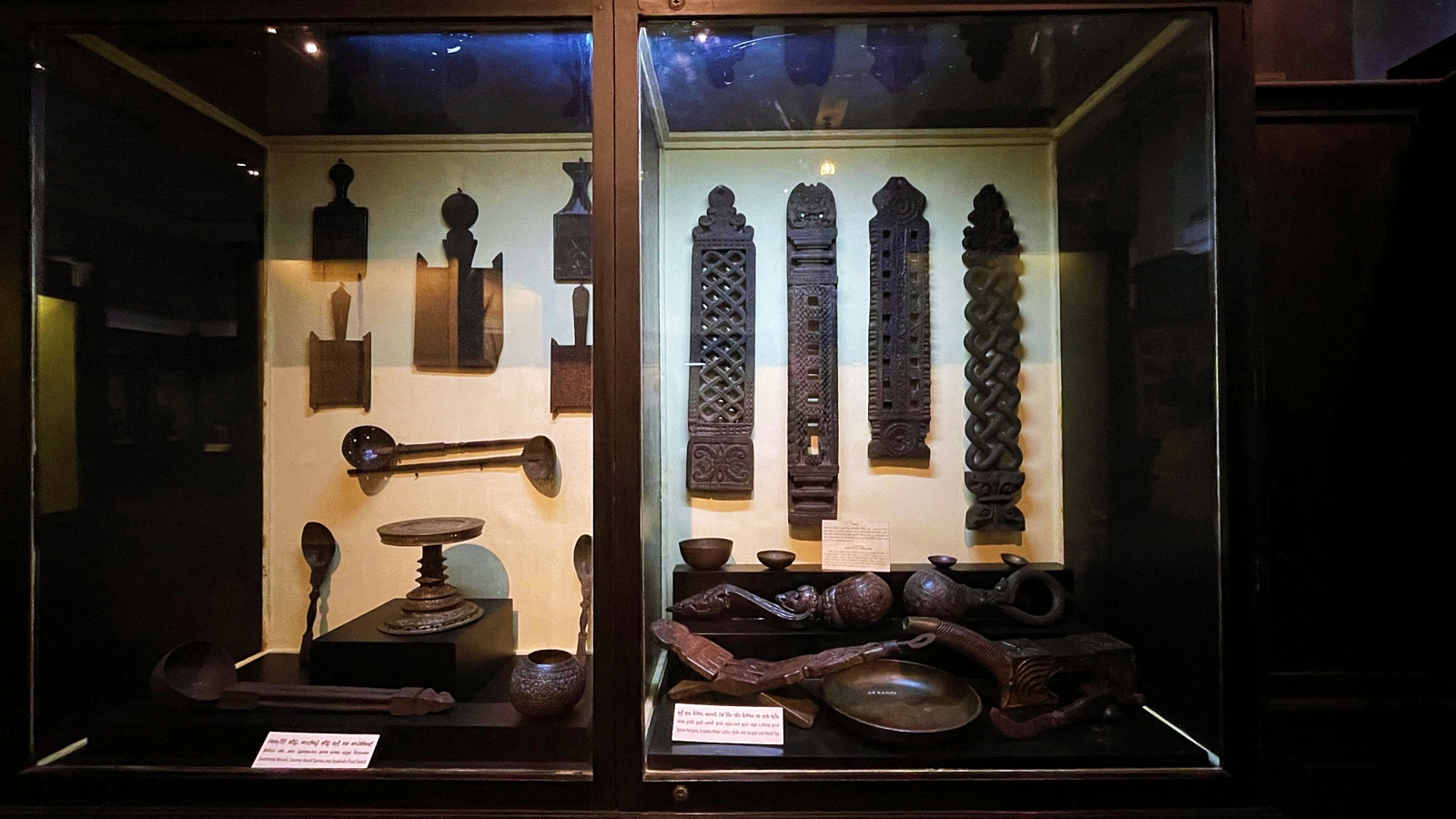
Spoon-hangers, Scrapers, Water Ladles, Knife with Scraper and Metal Tray, Sweetmeat Moulds, Coconut Mould Spoons and Serakkale Food Stand.
Tobacco Boxes & More
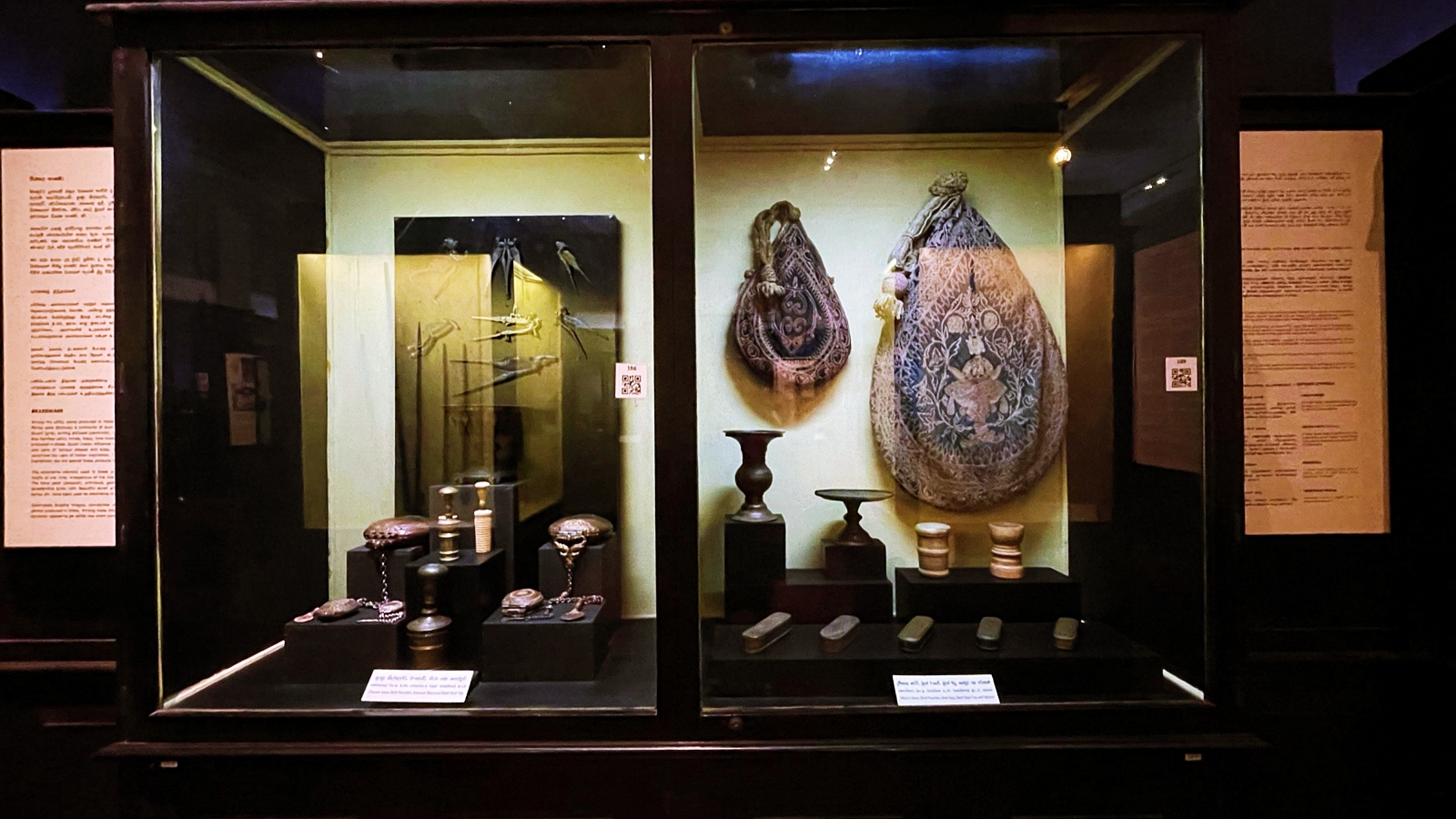
Chunam Boxes, Arecanut Slicers, Tobacco Boxes, Betel Pounders, Betel Bags, Betel Stool Trays and Spitoon.
The Royal Seat
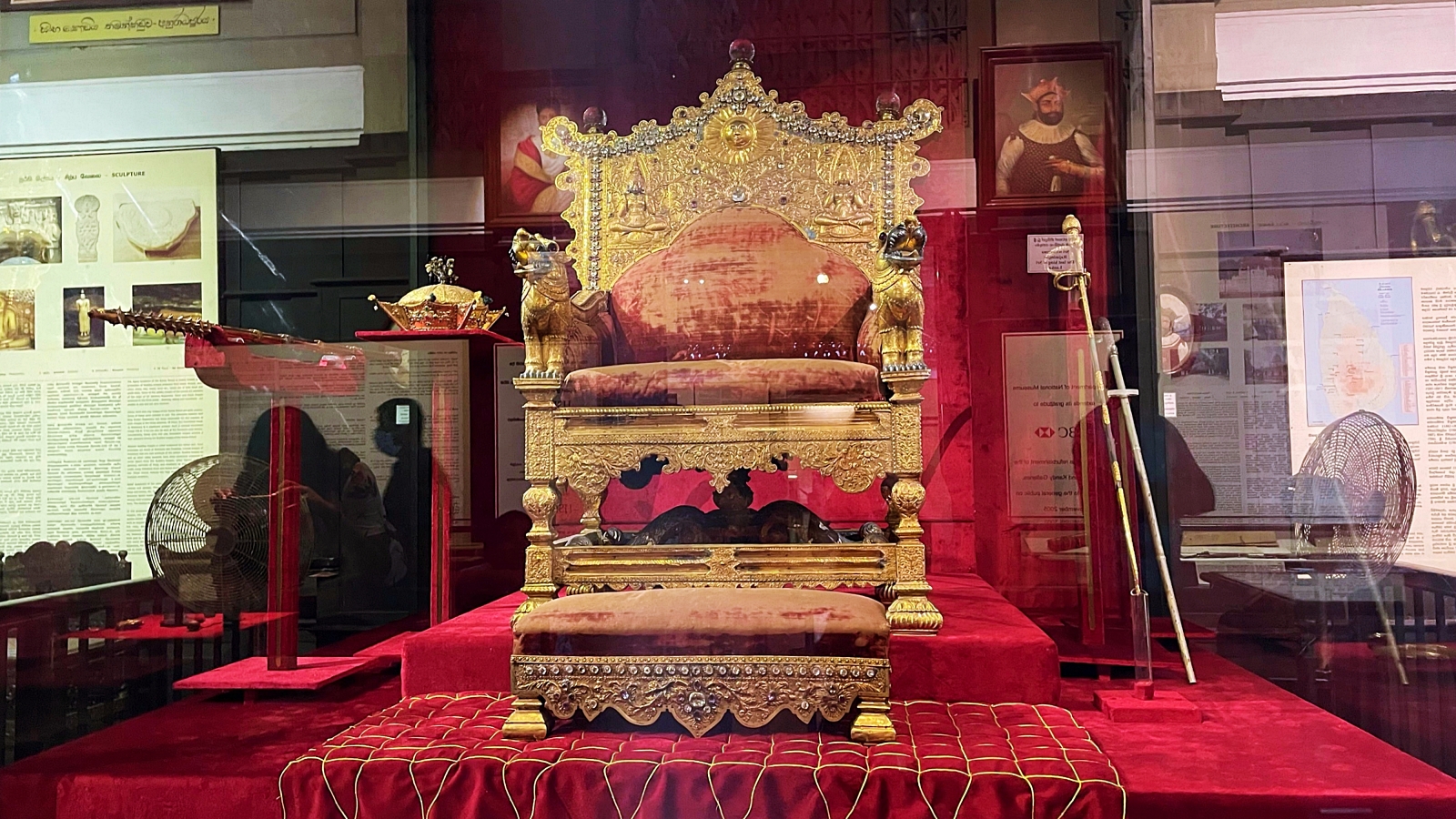
The Royal Seat was donated to King Wimaladharamasuriya II, by dutch governor Thomas Vanree who ruled the coastal area of Ceylon in 1693. This royal seat has been used by six kings after the death of King Wimaladharamasuriya II. This was finally used by king Sri Wickrama Rajasinghe the last king of Sri Lanka. After the king was captured by the English soldiers in 1815, the sword of the state with a belt, footstool, and sceptre with this royal seat was sent to England. Later this was sent back to Sri Lanka by King George V through the Duke of Gloucester in 1934. The sword of the state with its belt and sceptre and other things was sent back by King Edward VII in 1936.
Colombo National Museum Library
The library at the national museum is another excellent asset. It was established concurrently with the museum and houses copies of all books published in Ceylon since 1885. Since 1877, the large National Museum Library has also been open for business. The Government Oriental Library was launched seven years earlier, in 1870. Currently, it is the largest legal depository in the nation. Over the past 133 years, many regional magazines have been printed there.
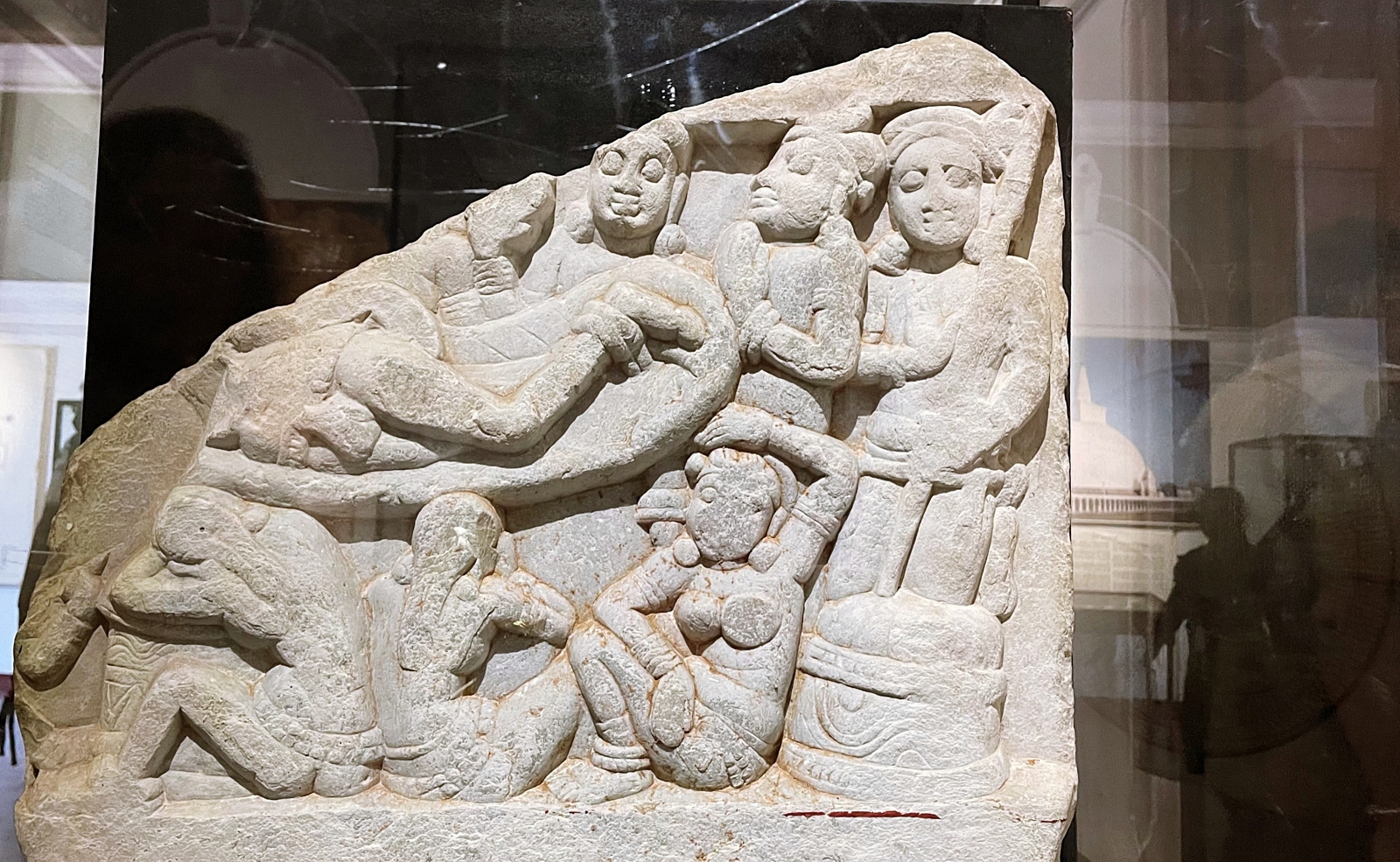
The library also has a large collection of old manuscripts on palm leaves covering a wide range of subjects, including astrology and folklore, and written in numerous languages. A Pali translation of the Mahavamsa, pamphlet books from the pre-Christian era, and books provided by the monarch of Burma are also present. It also received donations of book collections from several famous people, including Sir Solomon Dias Bandaranaike, Henry Blake, and H.C.P. Bell.
National Museum of Natural History
Colombo National Museum is also the location of a sizeable collection of the island’s natural heritage. The National Museum of Natural History Colombo, located in a different building on the same grounds, is where the entire collection is on display. It is the only museum on the island that showcases many aspects of nature. It was founded in 1986 and exhibits prehistoric cave drawings, Jurassic-period fossils, more than 5000 specimens of various mammals, as well as various sorts of natural flora and animals on the island of Sri Lanka.
Along with other displays highlighting the natural history of the nation, you will also find a collection of various rocks. The Colombo National Museum is open from 9 am to 5 pm. On public holidays, it remains closed. Since the entry fees for the two museums are considerably different, it is preferable to get a single ticket for both because the cost would be much greater.
For SAARC nationals: INR 500 For other visitors: INR 30

